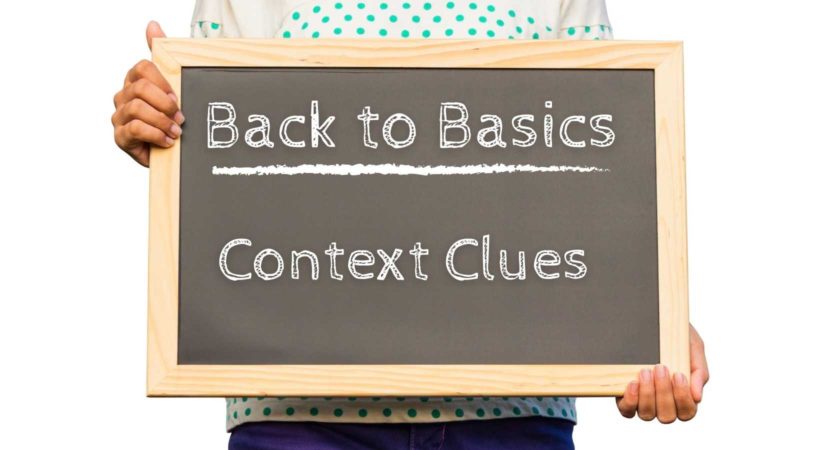
Back to Basics: Context Clues
Welcome to our Back to Basics series! In this series we explore some of the foundational methods, practices and terminology for teaching reading. This series is for those new to the field of literacy, beginning tutors or those who would just like a refresher. This week we are discussing using context clues to build vocabulary and increase comprehension.
Context clues use the surrounding sentence or passage to determine the meaning of a word. Often authors can leave hints as to the meaning of unfamiliar words in the text. Using context clues (or cues) can be thought of as a word attack strategy. It helps the reader from having to stop and look a word up in the dictionary. However, context clues are sometimes considered unreliable. It is not a deep enough strategy for learners to discover how to break the word down and learn the meaning behind the word consistently, unlike decoding strategies. Nonetheless, some tutors find that emerging readers learn most new words from context. Context clues are another tool for the learner’s toolbox.
There are four common types of context clues:
- Definition – the word is defined clearly within the sentence.
- Antonym (or contrast) – the word is signalled by words like “whereas”, “as opposed to”, or “unlike.”
- Synonym (or restatement) – others words are used in the sentence with similar meanings.
- Inference – words are not directly described, but rather inferred from the context.
As a tutor, you may implement the strategy in several ways:
- By modelling – The tutor will select a reading with unfamiliar words at the appropriate level. The tutor will then model thinking aloud about how to use one or more of the above context clue strategies.
- Guided practice – the I do, we do, you do method of gradually releasing responsibility to the learner. All the steps should be done with the same reading selection.
- Formative assessment – The learner is provided with a reading where certain words are bolded. They will use context clues to determine the meaning of the words.
Watch the three videos below for examples of using context clues with adult learners.
While context clues do not replace word attack and decoding strategies, it is another helpful tool for learners to use to discover and understand new words.
Resources
- Building a strong vocabulary for life skills
- Improve your Reading Through Context Clues (EAL)
- The Literacy Dive podcast – Episode 53: 7 Context Clue Strategies Every Student Should Know and Episode 54: How to Teach Context Clues (both adaptable for adults)
- The Use of Context Cues in Reading (adaptable for adults)
- Using Context for Reading Literacy in an ESL Class
- When Should Beginning Readers Use Context Clues?
Related Blog Posts
Back to Basics: Mind Mapping
Mind maps are not just for pre-reading! Read about using mind maps to teach writing.
Do Audiobooks Count as Reading?
Audiobooks continue to be extremely popular. But do they really “count” as reading?
Building Relationships with Students During COVID-19
Strong relationships are key to learning. Many of the actions you see in the above video are not possible now. But the need for connection remains. How do teachers …
